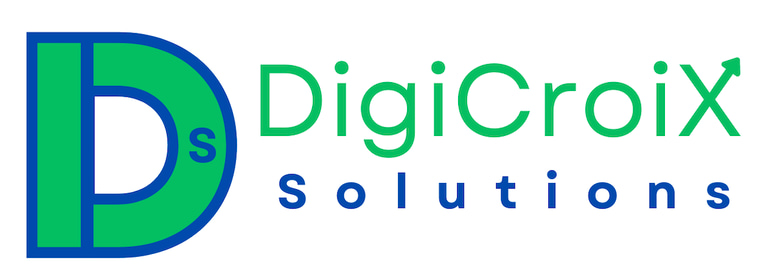How Hospital Adverts Influence Patient Trust and Decisions
Analyze how strategic hospital adverts build credibility and patient confidence. We share psychological triggers and design tips. Book a 1‑hour call to refine your ad approach.
Vishwa Raval
10/4/20255 min read


Understanding the Role of Hospital Advertisements
Hospital advertisements serve a crucial role in the healthcare industry, acting as an intermediary between healthcare providers and potential patients. They create initial awareness and shape perceptions about hospitals, thereby influencing patient decision-making processes. In a landscape characterized by vast choices, effective advertising can significantly enhance a hospital's visibility and credibility, which are essential in a competitive market.
Target audiences play a critical role in the formulation of hospital advertisements. Understanding demographics such as age, socioeconomic status, and specific health needs allows hospitals to tailor their marketing strategies effectively. For instance, advertisements aiming at younger patients may utilize digital platforms such as social media, while campaigns targeting an older audience might focus on print media or television. This targeted approach ensures that the messaging resonates well with the intended audience, increasing the likelihood of engaging potential patients.
Messaging strategies are another vital component of hospital advertisements. The language, tone, and visuals used in advertisements can significantly impact how a hospital is perceived. For example, showcasing patient testimonials can foster trust and authenticity, while highlighting advanced technology can convey a sense of modernity and innovation. Additionally, addressing community health initiatives in advertisements can enhance a hospital's image as a compassionate and responsible healthcare provider. This strategic communication contributes to building an overall positive reputation for the hospital.
Reputation management is also intrinsic to the success of hospital advertisements. By actively managing online reviews and public perceptions, hospitals can leverage advertisements to counteract negative feedback and strengthen their public image. Effective reputation management, paired with well-crafted advertisements, positions hospitals as reliable and trustworthy institutions that prioritize patient care. Thus, the role of hospital advertisements extends beyond mere promotion; they are integral to establishing and maintaining patient trust and confidence in the healthcare system.
Psychological Triggers: How Advertisements Foster Trust
Hospital advertisements often leverage psychological triggers to foster trust and confidence among potential patients. These mechanisms play a crucial role in influencing patient attitudes and decision-making processes, ultimately guiding them in choosing a hospital for their care. One fundamental element is emotional appeal, which creates a connection between the hospital and the patients. Advertisements that invoke feelings of hope, security, and compassion can resonate deeply, leading individuals to associate the facility with positive experiences and outcomes. By addressing common fears associated with medical care, such as anxiety and uncertainty, these ads can effectively generate a supportive environment that encourages patients to seek assistance.
Another potent psychological principle is social proof. When hospitals showcase testimonials from satisfied patients or highlight their achievements, such as accreditation or awards, it instills a sense of credibility. Potential patients may be influenced by the experiences of others, often perceiving a hospital as more reliable and competent based on third-party endorsements. When individuals see others benefiting from a particular hospital's care, it reinforces their perception of the institution's quality, ultimately enhancing trust.
Authority is yet another essential trigger in hospital advertisements. By featuring reputable healthcare professionals or showcasing partnerships with established medical organizations, hospitals can bolster their perceived credibility. When potential patients view a medical facility as an authority in healthcare, they are more likely to choose it over competitors. Finally, reassurance tactics, such as highlighting patient-centered care or emphasizing safety measures, contribute to building patient confidence. By addressing concerns upfront, hospitals can alleviate fears about procedures and treatment outcomes, providing potential patients with the comfort they need to make informed decisions.
Successful case studies illustrate these principles in action. For instance, a campaign showcasing patient success stories could effectively demonstrate the emotional appeal, while a series of award mentions might serve as powerful social proof. By understanding and implementing these psychological triggers, hospitals can create more effective advertisements that foster trust and confidence among potential patients.
Design Elements that Enhance Hospital Advertisements
The design elements of hospital advertisements play a pivotal role in shaping patient perceptions and fostering trust. A well-crafted advertisement not only communicates essential information but also evokes emotions that resonate with potential patients. To achieve this, visual aesthetics must be prioritized, as they determine the immediate impact an advertisement has on the viewer.
Color psychology serves as a fundamental aspect of design; different colors evoke various emotions and responses. For instance, blue is often associated with calmness and trust, making it a popular choice for healthcare settings. Similarly, green conveys health and wellness. By strategically employing these colors, hospitals can create an inviting atmosphere that encourages patients to engage with their services. Additionally, incorporating soft tones and gradients can enhance the sense of compassion and care, vital in a healthcare context.
Typography is another critical design element, as it directly influences readability and the overall tone of the advertisement. Clear and legible fonts convey professionalism, while softer, rounder typefaces can emphasize warmth and approachability. A balanced combination of these styles can effectively communicate both expertise and empathy, essential in healthcare marketing.
Another key factor is the use of clear calls-to-action (CTAs). A well-defined CTA guides potential patients in taking the next step, whether it is scheduling an appointment or visiting a website for more information. CTAs should be concise, actionable, and visually distinct within the advertisement, enhancing their effectiveness.
Finally, effective layout and imagery are essential in portraying professionalism and compassion. High-quality images that showcase healthcare staff interacting with patients can humanize the institution and promote a sense of trust. A thoughtfully organized layout ensures that crucial information is easily accessible, allowing potential patients to feel informed and confident in their choices.
Refining Your Advertising Approach: Booking a Call for Expert Guidance
In today's competitive healthcare landscape, effectively communicating your hospital's strengths and services is crucial for patient trust and confidence. This is where expert guidance becomes invaluable. By opting for personalized consultations, healthcare marketers can gain insights tailored to their specific needs and objectives. Engaging with professionals who understand the nuances of hospital advertising can significantly elevate the quality and impact of your marketing efforts.
One-on-one consultations provide a unique opportunity to receive personalized feedback on existing advertising strategies. During a dedicated one-hour session, experts will review your current marketing initiatives, identify areas for improvement, and suggest best practices to enhance your approach. This focused critique can help refine your messaging, ensuring it resonates with your target audience. Tailored recommendations from an experienced consultant can guide you in developing ads that not only attract attention but also build trust and facilitate informed decision-making among potential patients.
Moreover, collaborating with advertising experts enables hospitals to stay updated on industry trends and effective communication strategies. These professionals can provide insights into consumer behavior, helping you to understand what patients are looking for when they evaluate healthcare options. By aligning your advertising campaigns with these insights, you can create content that addresses patients' concerns, enhancing their overall confidence in your hospital.
To initiate this transformative process, consider booking a call for a one-hour consultation. This strategic investment not only promises to refine your advertisements but also strengthens the foundation of trust and confidence that is essential in hospital marketing. Taking this step can lead to improved patient engagement and ultimately more informed decision-making, contributing to the overall success of your healthcare institution.
Get in Touch
Book your free consultation today and let's create a strategy to elevate your success!


Address
94 Shree Nagar Apartment, Sola Road, Naranpura, Ahmedabad, Gujarat, India 380063
6706 Fulton Avenue, Burnaby, BC, Canada V5E 3H1
Phone
+91 88497 12474
Quick Links
© 2025. All rights reserved.
Useful Links
Engagement
Subscribe
+91 88497 12474
